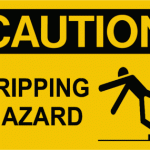“The team with the most StuBens at the end of 45 minutes wins!” the instructor said.
So naturally, I wanted to win the game and started right away to get as many StuBens as possible.
This was a simulation I completed as part of my new teacher induction program many years ago. Our goal as a team was to get as many StuBens, or Student Benefits, as possible by making decisions, talking to teachers and parents, implementing initiatives, and more in our “school”. After our team had reached a consensus on something to do, such as talking to an influential teacher about an instructional idea, we had to take the card to our instructor, and she would hand us another card with further instructions and the amount of StuBens our decision earned, or worse, lost. After a certain amount of time, 10 minutes or so, our instructor would announce how much time in the school year had passed.
It was a fun game that taught a few important lessons: school-wide change happens slowly and you never know which decision will be the right one at the moment for your students. The growth students make at the end of the year will determine the amount of StuBens you earned with the decisions you made during the year.
I have been reflecting on my first few months in my new role as Student Achievement Specialist over Winter Break. In the spirit of the new year and making a resolution I have been trying to determine what is working, and what is not so that I can gain the most StuBens. Much of my job involves data: looking for trends, determining which students are in need of interventions, which interventions to choose for which students, and the effectiveness of the intervention. This is easy to determine the StuBens earned; the more students that improve their scores on assessments the more StuBens earned.
I cannot help but wonder about the StuBens that are earned that are not reflected in the data that I have access to. I have previously written about how teaching is both an art and a science, and while my job is heavily focused on the science of teaching I cannot forget about the other, and equally important half: the art of teaching.
I may not be able to measure the correlation between the number of books read aloud to a class of students and performance on assessments, but I can see the joy on students’ and teachers’ faces as they take part in this shared experience together. Maybe I cannot measure the art projects, learning games, classroom, and grade-level traditions quantitatively, but that does not mean that there are no StuBens due to these things. The qualitative data about students enjoying school makes these StuBens just as valuable as the quantitative data when we look at student growth.
As we return from Winter Break and close the year, I resolve to place as much importance on the art of teaching as there is on the science of teaching. After all, teaching is a work of heart.
<a href=”https://www.vecteezy.com/free-photos”>Free Stock photos by Vecteezy</a>









